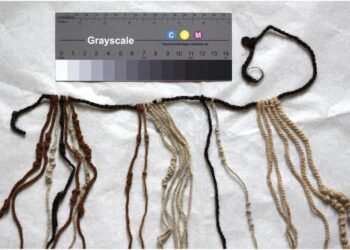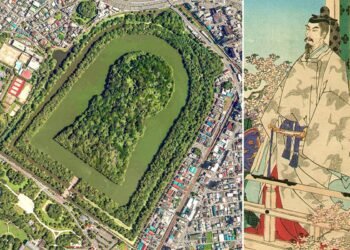A multinational team of researchers has revealed the existence of an advanced material culture at the Shiyu site in Shanxi Province, China, dating back approximately 45,000 years.

The Shiyu Upper Palaeolithic site, initially excavated in the 1960s, yielded more than 15,000 stone tools, animal remains, and a fragment of a hominid skull identified as Homo sapiens. Unfortunately, part of the archaeological collection, including the cranial fragment, was lost over the years. However, under the leadership of Dr. Shixia Yang, researchers revisited the remaining materials using modern radiometric techniques to establish an accurate chronological timeline.
The results of the study, which dates the cultural layer at Shiyu to a period between 45,800 and 43,200 years ago, reveal an Initial Upper Palaeolithic (IUP) archaeological assemblage. This assemblage includes laminar technology, Levallois points, tanged and hafted projectile points, tools made with obsidian from hundreds of kilometers away, and a perforated graphite disk.
Associate Prof. Yang Shixia from the Institute of Vertebrate Palaeontology and Palaeoanthropology described the discovery, stating, “Our new study identified an Initial Upper Palaeolithic archaeological assemblage from the Shiyu site of North China dating to 45,000 years ago that includes blade technology, tanged and hafted projectile points, long-distance obsidian transfer, and the use of a perforated graphite disk.”
The comprehensive analysis of the archaeological findings indicates a highly advanced material culture. The inhabitants of Shiyu, dubbed “horse hunters” due to taphonomic and use-wear analyses, demonstrated sophisticated hunting techniques, including the selective culling of adult equids. The stone tool assemblage, incorporating Levallois points, various tanged tools, end-scrapers, denticulates, and borers, showcases a remarkable toolkit from the Upper Palaeolithic.
Furthermore, the Shiyu discoveries challenge conventional beliefs about the dispersal of Homo sapiens populations. The advanced cultural behaviors and technological innovations observed in the toolkit, shaped graphite disc, and long-distance transfer of obsidian underscore the complexity of early human populations in North China around 45,000 years ago.
The interdisciplinary international team’s efforts, spanning institutions such as the Institute of Vertebrate Paleontology and Paleoanthropology (IVPP) of the Chinese Academy of Sciences, Griffith University, Université de Bordeaux, and others, culminated in the acceptance of the comprehensive research report at the end of 2023, 60 years after the site’s initial excavation.
The chronological work at Shiyu, led by Prof. Jia-Fu Zhang and in collaboration with the Oxford Radiocarbon Accelerator Unit, utilized accelerator mass spectrometry (AMS) radiocarbon dating and optically stimulated luminescence (OSL) dating. The meticulous dating process involved analyzing three animal bone samples with anthropogenic cut marks, dating back to the original 1963 excavation. The results pinpointed the main cultural layer’s age to be between 45,800 and 43,200 years ago.
The findings were published in the journal Nature Ecology & Evolution.






















Map would be helpful. Search for Shiyu China gets only Shiyuzhen, likely not the same. Reader learns only “northern China.”
Thanks for your comment. The Shiyu site is located about 20 kilometers from the city of Shuozhou.
Are there 2 Shiyu because the one I see is at 38°15’16.37″N 113° 3’36.10″E which isn’t very close to Shuozhou?
The Shiyu site is located at 39.40468998062794, 112.34910834127272